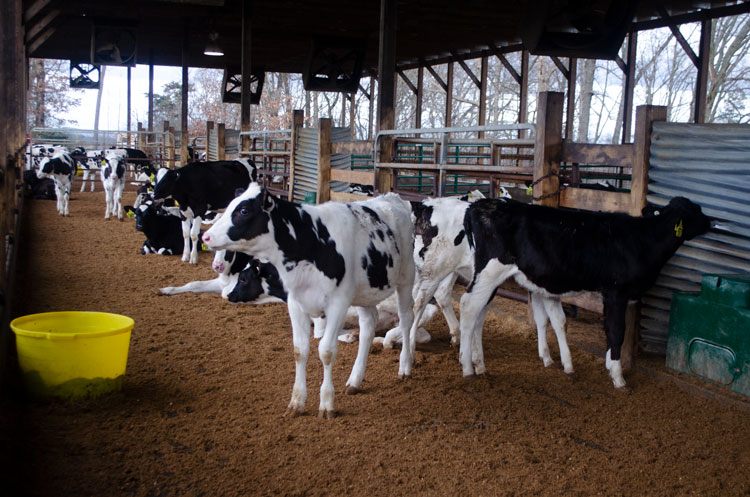
Whether building brand new or repurposing an old building, there are certain details that should not be overlooked when it comes to heifer housing. Dairy specialist David Balbian shared his recommendations during a recent Cornell Cooperative Extension “Dialing into your best dairy” podcast.
“We need to group heifers by size, not age,” was his first piece of advice. “And we need to scale stalls, headlocks, and crossovers to the heifer size.”
Balbian said a 300-pound heifer needs a 30-inch-wide stall. An 1,100-pound heifer should have a 42-inch-wide stall.
Eating space must also grow with the animals. As an example, Balbian said a 3- or 4-month-old heifer only needs 12 inches of bunk space, while a 12- to 24-month-old heifer needs 22 inches.
“Inadequate bunk space results in aggression and competition, which can lead to more injury and timid heifers falling behind,” Balbian said.
He noted that keeping feed pushed up is also important. Hoof trimmers are finding heifers that enter the milking string with feet and leg conformation issues due to pushing against the headlocks while reaching for feed. “Growing bones can be altered this way and can affect longevity in the herd,” explained Balbian.
He encouraged producers to also think about lighting. “It’s as important for heifers as it is for milking cows,” he said. He noted that long day lighting has been shown to improve growth rates and feed intake in heifers.
As for space per animal, “I know it’s tempting, but do not overcrowd,” Balbian said. “Heifers should not have to choose between lying on the floor or standing because there are no open stalls available.”
Barns should be clean
He stressed the importance of designing buildings that can be cleaned regularly and easily, especially since it relates to future milk quality. “Environmental pathogens are our biggest culprit for mastitis in fresh, first calf heifers,” he said.
Unclean facilities can also lead to future foot health problems. “Heel warts often begin in dirty heifer pens and get increasingly worse and negatively affect a cow throughout its lifetime,” he shared. “Prevention is key, by keeping the floors clean and removing hazards that may cause injury to hoof or skin.” He said to install footbaths, and a logical place is in crossover alleys.
Speaking of those crossovers, Balbian said to include plenty of them in a heifer barn. For every 100 feet of alley, he said there should be a minimum of three crossovers, and don’t create dead end alleys.
Also pay attention to floors. “Roughness will cause foot damage,” he said. Grooving after concrete hardens is the preferred method to handle these floors, according to Balbian.
Keep the air moving
Of course, ventilation is key. Balbian said it’s not as challenging to ventilate heifer buildings as it is lactating cow barns, since those lactating animals produce a lot more body heat. Still, ventilation removes contaminated air and replaces it with fresh air, which is important for both animals and people.
As for temperature control, “Dairy replacements can handle cold pretty well, as long as they are clean and dry and not exposed to drafts in the winter,” Balbian said. “Heat stress is really our biggest challenge. Think about heat stress abatement and alleviating the negative effects of overheating.”
While building a brand new barn with all of these specifications would be ideal, that is not a financial reality for many farms. That doesn’t mean heifer productivity has to suffer, though.
“We are often dealing with older barns that do have limitations, but we can make modifications to improve them,” Balbian said.








